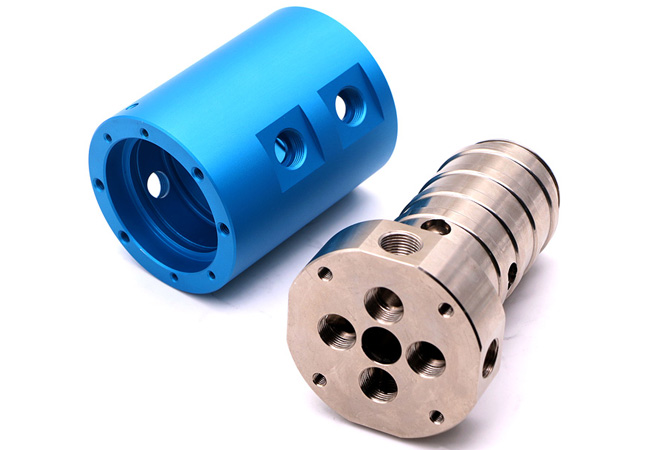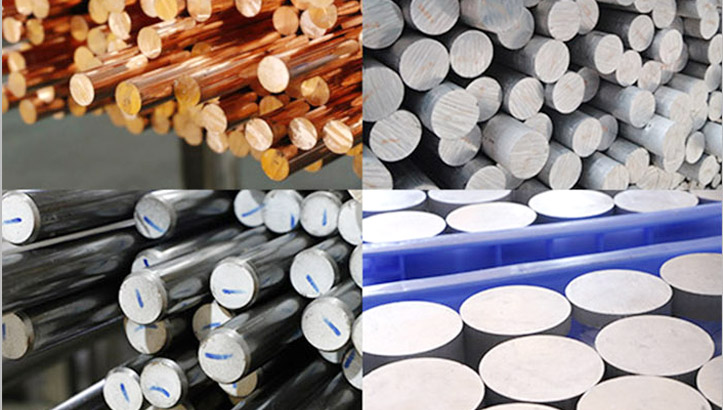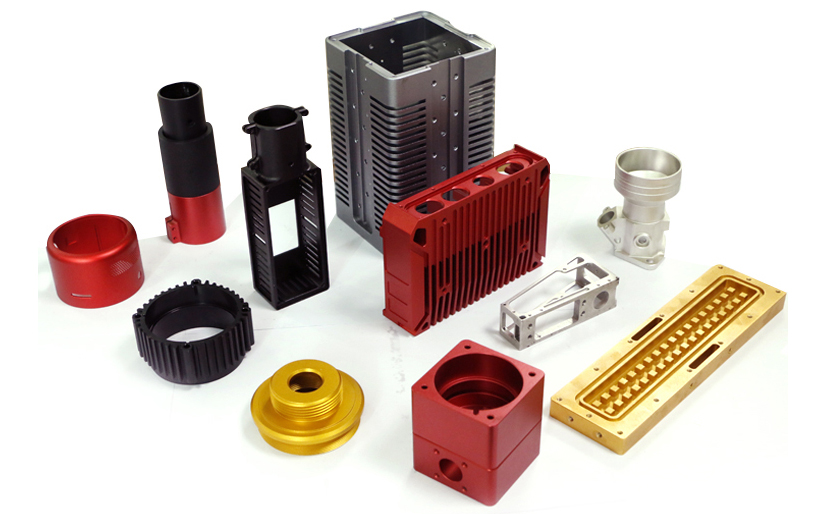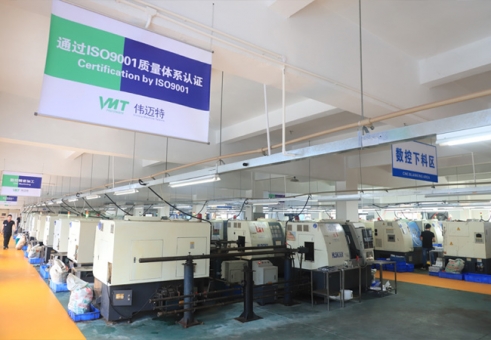CNC Precision Turned Parts: A Comprehensive Guide
Finding high-quality CNC precision turned parts can be a challenge, especially with industries that require tight tolerances and complex geometries. Subpar parts may lead to performance failures, production delays, and costly downtime. In this guide, we’ll cover everything you need to know about CNC turning processes, the advantages of precision turning, and how to choose the right turned parts supplier for your needs.
CNC precision turned parts are vital components in industries like automotive, aerospace, and medical devices. Their unmatched precision, versatility in materials, and ability to produce intricate designs make them essential for high-performance applications.
Now, let’s explore what CNC precision turned parts are, how they are made, and the design considerations that ensure top quality and performance.
What Are CNC Precision Turned Parts?
CNC precision turned parts refer to components manufactured using a Computer Numerical Control (CNC) lathe. CNC lathes use automated processes to rotate a workpiece while a cutting tool shapes it, creating precision parts with high accuracy. These parts are essential in industries where tight tolerances and intricate shapes are required, such as in aerospace, automotive, and medical applications.
Key characteristics of CNC precision turned parts include their high precision, versatility in material options, and ability to meet complex geometrical specifications. Whether you’re working with metals, plastics, or composites, CNC turning offers the flexibility to produce a wide variety of parts.

What Precision Parts Can Be Produced By CNC Turning?
CNC turning is ideal for producing a wide variety of precision parts that are critical in many industries. Some common examples include:
| Part Name | Simple Explanation | Where It’s Used |
|---|---|---|
| Shafts | Long, round rods that rotate and carry force | Motors, gearboxes, machinery |
| Bushings | Small tubes that reduce friction between moving parts | Cars, industrial machines |
| Fittings | Connectors for joining pipes or mechanical parts | Plumbing, hydraulic systems |
| Connectors | Small metal parts that ensure signal or power connection | Electronics, communication devices |
| Rings & Sleeves | Round parts that act as spacers, seals, or support sleeves | Automotive, aerospace systems |
| Pins | Small rods used to lock or align parts | Machinery, fasteners |
| Valve Bodies | Hollow parts that control fluid flow | Pumps, fluid systems |
| Flanges | Disc-shaped parts with holes to connect pipes | Oil & gas, water systems |
| Boreholes | Precisely machined holes inside round components | Any part needing accurate internal diameter |
| Gears (basic) | Circular parts with teeth for motion transfer | Automotive, robotics |
| Nozzles | Cone- or tube-shaped parts that control direction of liquid/gas | Sprayers, engines |
| Electronic Housings | Small cases that protect electronic components | Transistors, sensors |
Design Considerations for CNC Turned Parts
When designing parts for CNC turning, it’s crucial to consider several factors to ensure the part meets specifications, is cost-effective to manufacture, and can be produced with high precision. Below are key design considerations:
Material Selection
Different materials react differently during the turning process. Metals like aluminum, steel, and brass are commonly used, but plastics such as PTFE, PEEK, and Delrin can also be turned with great precision. Each material has its own set of machining parameters, including cutting speeds, feeds, and tool selection. Material choice impacts the final finish, durability, and performance of the part, so it’s essential to select the right material for the specific application.

Geometry
The complexity of the part’s geometry directly affects the choice of tools and cutting strategies. Simple shapes, such as cylindrical parts or discs, are easy to machine. However, more complex designs, like those requiring undercuts, threads, or intricate patterns, may need specialized tools or advanced toolpaths. Designing parts that are symmetrical and follow a natural flow of the turning process helps reduce manufacturing complexity and cost.
Tolerance
Achieving tight tolerances is critical, especially in industries like aerospace, automotive, and medical device manufacturing. Parts must be designed with design for CNC machining principles in mind to ensure precision. While CNC turning can achieve high tolerances (typically up to ±0.01mm), excessive tolerance requirements can increase machining time and costs. It’s important to balance precision with cost-effectiveness, ensuring that tolerances are only as tight as necessary for the function of the part.
Surface Finish
The desired surface finish is another key consideration. Depending on the part’s function, a smooth or rough finish may be required. Achieving high-quality finishes often requires fine-tuning machine settings, tool selection, and cutting speeds. Parts for the aerospace or medical industries, for instance, often require a polished, smooth finish to avoid imperfections that could affect performance or longevity. Some designs may require post-processing such as polishing, anodizing, or coating, so these factors should be considered upfront.
Part Orientation and Clamping
The way the part is held and oriented during machining can affect the final outcome. Improper clamping can lead to part distortion, misalignment, or poor surface finishes. For CNC turned parts, it’s essential to design the part in a way that minimizes handling and clamping issues during machining. The orientation of the part within the machine also plays a role in tool access and cutting efficiency.
Advantages of CNC Precision Turning
The benefits of CNC precision turning are vast, especially when compared to traditional manual turning methods. Below are the key advantages:
| Advantage | Simplified Description | Why It Matters |
|---|---|---|
| High Precision | Achieves tight tolerances (as low as 0.01 mm) | Ideal for aerospace, electronics, and medical parts where accuracy is critical |
| Flexibility | Can create simple to complex parts, and switch designs quickly | Supports various industries and enables both prototyping and mass production |
| Automation | Fully computer-controlled with minimal human input | Reduces errors, boosts repeatability, and ensures stable production quality |
| Cost-Effectiveness | Saves on labor and reduces waste through fewer reworks and higher efficiency | Becomes more economical over time, especially for high-volume runs |
| Increased Efficiency | Enables continuous, unattended operation once programmed | Speeds up production and meets tight delivery deadlines |
| Improved Surface Finish | Delivers smoother and more uniform finishes due to precise tool control | Essential for applications where both function and appearance matter, such as medical implants |
| Consistency & Reproducibility | Produces identical parts in every run, regardless of batch size | Ensures quality control for critical industries like aerospace and healthcare |
Key Components of CNC Turning Machines
A CNC turning machine consists of several key components that work together to produce high-quality, precision turned parts. Each component plays a crucial role in ensuring the part is machined accurately and efficiently. The key components include:
1. CNC Lathe
The CNC lathe is the primary machine used for CNC turning. It typically consists of a rotating workpiece and stationary cutting tools that are used to shape and size the material. The lathe is responsible for rotating the workpiece, while the cutting tools remove material to achieve the desired dimensions and surface finish. It is the core of any CNC turning operation and can accommodate a variety of materials, from metals to plastics.
2. Spindle
The spindle is a vital part of the lathe that holds and rotates the workpiece. The rotation speed of the spindle can be adjusted to suit the material and the operation being performed. Higher spindle speeds are often used for finer cuts and smoother finishes, while slower speeds are used for tougher materials or more robust operations. The spindle is powered by the machine’s motor and is essential for maintaining accuracy during the machining process.
3. Turret
The turret is a rotating tool holder that holds multiple cutting tools. It is mounted on the machine and rotates to bring the correct tool into position during machining. The turret helps automate the tool-changing process, which is essential for complex parts that require multiple operations, such as drilling, boring, threading, and turning. The turret system allows the machine to operate continuously without manual intervention, improving efficiency and reducing setup times.
4. Chuck
The chuck is a clamping device that holds the workpiece securely in place while it is being machined. There are different types of chucks, including three-jaw chucks, collet chucks, and hydraulic chucks, depending on the type of workpiece and the machining operation. The chuck ensures that the part remains stable and aligned during the turning process, minimizing the risk of errors or distortions. Proper clamping is critical for maintaining accuracy and achieving tight tolerances.
5. Cutting Tools
Cutting tools are one of the most important components in a CNC turning machine. Tools like carbide inserts, high-speed steel tools, and ceramic tools are commonly used for machining different materials. The cutting tools perform the actual material removal by scraping, shearing, or cutting the workpiece. The selection of the correct cutting tool is crucial for achieving the desired finish, precision, and tool life. Tools must be sharp, durable, and appropriate for the material being machined to ensure quality results.
6. Tool Post
The tool post holds the cutting tools and is mounted on the machine’s carriage. It provides the precise control necessary for positioning the tools at the correct angle and position to perform accurate cuts. The tool post can be adjusted for different cutting operations and is often equipped with an automatic tool changer in advanced CNC lathes.
7. Tailstock
The tailstock is located on the opposite side of the chuck and is used to support the workpiece during longer turning operations. It can be moved along the bed of the lathe and provides additional support for parts that might bend or flex without it. The tailstock is essential for maintaining part stability during more extended machining processes, such as when turning long shafts or cylindrical components.
8. CNC Controller
The CNC controller is the “brain” of the CNC turning machine. It is responsible for interpreting the machine’s instructions (usually in the form of G-code) and controlling the machine’s movements and operations. The controller communicates with the various components of the machine to ensure that the turning process is carried out accurately. Modern CNC controllers feature user-friendly interfaces, real-time monitoring, and the ability to optimize machine settings for efficiency.
What Is the Usage of CNC Precision Turned Parts?
CNC precision turned parts are used in a wide variety of high-performance industries where precision, durability, and reliability are crucial. These parts are designed to perform under extreme conditions and are integral to the operation of complex systems across multiple sectors. Some key industries and their applications include:
Automotive
CNC precision turned parts are essential in the automotive industry for creating critical components such as engine parts, fasteners, chassis elements, brake system components, and suspension parts. These parts need to meet strict safety, durability, and performance standards, making CNC turning the ideal manufacturing method. Precision components, such as valve seats and camshafts, require exact dimensions and tight tolerances to ensure optimal engine performance and longevity.
Aerospace
In the aerospace industry, parts like turbine blades, aircraft fittings, landing gear components, fuel system components, and fasteners must be lightweight yet highly durable. CNC precision turned parts are used to create these mission-critical components that operate under high-pressure and high-temperature conditions. The ability to produce parts with tight tolerances is essential for maintaining aircraft safety, fuel efficiency, and operational performance.
Medical Devices
CNC precision turned parts are used extensively in the medical device industry for manufacturing parts like implants (e.g., orthopedic implants, dental implants), connectors, surgical instruments, and medical equipment components. These parts require not only precision but also biocompatibility. The ability to manufacture parts with strict tolerances ensures that medical devices perform as intended and meet safety and regulatory standards.
Electronics and Industrial Equipment
CNC turned parts are vital in the electronics industry for producing parts like connectors, pins, mounting brackets, housing components, and heat sinks. These components are used in consumer electronics, telecommunications equipment, and power generation systems. Additionally, robotic systems rely on precision turned parts for creating components such as actuators, gears, and sensors. The high precision and repeatability of CNC turning ensure that these parts can function reliably within intricate electrical systems and mechanical devices.

Energy and Power Generation
CNC turned parts are also critical in the energy sector, where precision components are needed for turbine assemblies, generators, and pumps. These parts need to be capable of withstanding high stresses, vibrations, and extreme temperatures, while maintaining efficiency and reliability over long periods of operation.
Defense and Military
The defense industry requires CNC precision turned parts for a variety of applications, including the manufacturing of ammunition components, firearms parts, optical systems, and communication devices. These parts must meet exacting standards of reliability, performance, and durability, often under extreme stress and environmental conditions.
Start Your Machining Project with VMT CNC Turning
At VMT, we specialize in providing CNC precision turned parts for a wide range of applications. Our state-of-the-art machines, experienced engineers, and commitment to quality ensure that you receive parts with exceptional accuracy and precision.

Whether you need small or large batches, our turned parts manufacturing process guarantees that each part meets your exact specifications, ensuring high performance for your application.
Note: If you want to learn more about turning, you can read this article: The Ultimate Guide to Stainless Steel Turning
In Conclusion
CNC precision turned parts are essential for industries that demand high precision and reliability. By focusing on design, material selection, and manufacturing processes, you can ensure the best results for your parts. Whether you’re working with automotive, aerospace, or medical applications, CNC turned parts provide the performance and durability you need.
Frequently Asked Questions
Why is Precision Important in Machining?
Precision in machining is crucial because it ensures that parts fit together correctly, function as intended, and meet tight tolerances. Inaccuracies can lead to product failures, increased scrap rates, and higher costs due to rework. Precision machining ensures that each part meets the design specifications, enhancing the quality and reliability of the final product, especially in industries like aerospace, automotive, and medical devices, where even small deviations can have significant consequences.
What is CNC Turned Components?
CNC turned components are parts produced by CNC turning operations, where a rotating workpiece is shaped by a stationary cutting tool. These components can include shafts, pins, bushings, and other cylindrical parts. CNC turning is highly accurate, producing parts with complex shapes like grooves, threads, and tapers. CNC turned components are widely used in various industries, including automotive, aerospace, and electronics, due to their precision and repeatability.
What is the Precision of CNC?
The precision of CNC machines is typically measured in microns (one-thousandth of a millimeter) and can vary depending on the machine and the complexity of the task. High-precision CNC machines can achieve tolerances as tight as ±0.001 mm (1 micron). CNC precision is critical in ensuring parts meet exact specifications, especially for industries that require high-performance components like medical devices, aerospace, and automotive parts.
What is CNC Turning Used For?
CNC turning is used for shaping cylindrical parts by removing material from a rotating workpiece with a cutting tool. It’s ideal for producing parts such as shafts, spindles, bushings, and gears. CNC turning is commonly used in industries like automotive, aerospace, and electronics, where precision and the ability to work with a variety of materials such as steel, aluminum, and plastics are required. It is also used for creating parts with complex geometries like threads, tapers, and holes.



